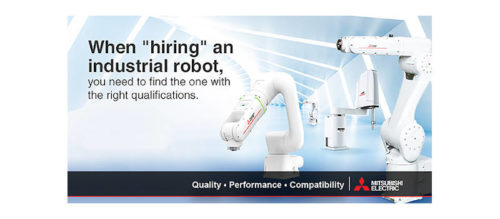Developing robotic safety standards and compliance
Robotic safety standards have been around for a few decades and their importance is growing as they became more common in manufacturing.
Robotics have been a fast-growing aspect of industrial manufacturing and automation for a while. Robots offer a lot of potential and need to be handled safely. This is something the Robotic Industries Association (RIA) has been working on since the 1980s, according to Carole Franklin, the RIA’s director of standards development, in the presentation, “An Introduction to Robotic Safety Standards & OSHA Compliance,” which was presented virtually at Automate Forward, an A3 online conference and exhibit during the week of March 22.
“One of the first things the RIA did was work on developing safety standards. We knew it was critical in developing them and keeping workers safe,” she said.
This has led to ANSI/RIA 15.06-2012, which is focused on robot safety and is primarily focused on fixed-in-place robots. It was published in two parts in 2012 and emphasizes requirements for the robot manufacturer and the system integrator.
The goal, Franklin said, was keeping people safe around robotic systems in an industrial environment and making sure they are not anywhere near a robot’s restricted space while the machine is operating.
Paradigm shift: Collaborative robotics
All well and good, but the advent of collaborative robots, which brings human and robot workers together, has created a real paradigm shift.
“Collaborative robots,” Franklin said, “have taken off in the last few years.”
Traditional robots do make up the majority of robot sales, to be sure, but the market is changing and collaborative robots are a major driving force. This is especially true for non-automotive applications. To address this, a technical specification, ISO/TS 15066:2016 – was released in 2016.
Collaborative robot systems have built-in safety capabilities to reduce risks to the human worker. Key collaborative techniques are:
- Safety-rated monitoring stop
- Hand guiding
- Speed and separation monitoring
- Power and force limiting.
These techniques are designed to allow the robot, which normally wouldn’t operate in proximity with humans, to operate safely so both can effectively complete their tasks.
Industrial mobile robot standards and types
The most recent standard, R15.08-1, is focused on industrial mobile robots (IMRs), which are another growing segment of the market.
“That word ‘mobile’ has added a great deal of complexity to the standards process,” Franklin said.
Defining what a mobile robot is part of that complexity. Franklin said it includes a semi-structured environment and is ground-based. It doesn’t specify whether a robot should be indoor or outdoor and whether it should be on wheels or legs. It does explicitly exclude vehicles driven by an operator and fork trucks or anything else that might be considered an autonomous guided vehicle (AGV).
Three types of industrial mobile robots
Franklin said there are three types of IMRs. Type A has no attachments and is one type of mobile platform; Type B has attachments that may be passive or active, but no manipulate; Type C is a mobile platform with a manipulator attachment like an arm. It is not, however, an AGV or intended to operate like one.
While the idea of a mobile robot may be nebulous, Franklin said they worked hard to define it in the 2020 edition. Part 2, which is expected to release in 2022, which will focus on integrating, configuring and customizing the IMR or system or fleet of IMRs into a customer’s specific site.
OSHA and standards compliance
OSHA, NIOSH and the RIA are working together to ensure the safety of humans working with robots. The alliance signed in 2017 and renewed in 2019. The goal is the three groups working together to educate companies, the public and each other about best practices in industrial robot safety.
Stephen A. Billings, a safety specialist at OSHA, said they are very much focused on robotics and their importance in manufacturing. “Interest in robotics is very important to us. Our goal, of course, at the end of the day, is to bring everyone home safely in one piece,” he said.
Because OSHA doesn’t currently have a robot standard, they defer to the U.S. consensus standards to assist during OSHA inspections, giving them something to work with. OSHA’s collaboration with the RIA and NIOSH help on that front, but it can be tricky, at times.
While there currently isn’t an OSHA robot standard, Billings said, “Perhaps someday will there be one.”
Chris Vavra, web content manager, Control Engineering, CFE Media and Technology, cvavra@cfemedia.com.
Original content can be found at Control Engineering.
Do you have experience and expertise with the topics mentioned in this content? You should consider contributing to our CFE Media editorial team and getting the recognition you and your company deserve. Click here to start this process.




